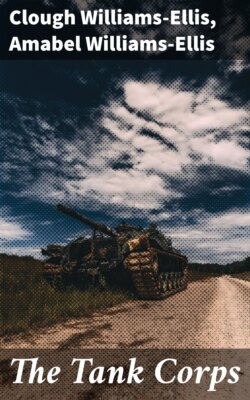Читать книгу The Tank Corps - Clough Williams-Ellis - Страница 8
На сайте Литреса книга снята с продажи.
II
ОглавлениеTable of Contents
Meanwhile the Joint War Office and Admiralty Committee system was too simple to last.
From August 1915 to August 1917, when the “New” Tank Committee was formed, the control and administration of Tank manufacture and design were extraordinarily tentative and shifting. Necessarily so. The home organisation had to expand very rapidly, and constantly to adapt itself to changed conditions of Tank tactics abroad and Tank manufacture at home.
Even the multiplicity of the authorities concerned seems to have been to a great extent inevitable. The Tank had, of course, initially complicated its early history by starting life in Infantry puttees and a south-wester.
At the point we have reached, its story plunges into a whirling quicksand of departments, branches, committees, and conferences, which were reorganised and rearranged—changed hats and functions with bewildering frequency. This tangle of activity Colonel Swinton throughout made it his hobby to understand and his business to co-ordinate.
The present historians, on the contrary, feel tempted to adopt the simple method of their Hebrew predecessor, who, having picked out one plum, so often blandly continues: “And the rest of the acts of the Trench Warfare Department and all that they did, are they not written in the book of the archives of the War Office?”
However, it is possible that the Hebrew historian honestly believed that the lost books of the Chronicles were really available to the inquiring reader. The present authors have no such illusion about War Office papers, and therefore propose to give at least an outline of the vicissitudes and fluctuations of early Tank control.
The chief persons of the Drama remain throughout:
The War Office: (1) In its capacity as Ordnance, and (2) in its capacity as General Staff. Later (3) as the Tank Department, War Office.
G.H.Q.: (1) In its main capacity, and as (2) The Experiments Committee.
Later, the H.B.M.G.C.
Finally, the Tank Corps.
The Admiralty: (1) In its capacity as the Land Ship Committee, and (2) as Squadron 20 of the R.N.A.S.
The Ministry of Munitions: (1) In its capacity as the Trench Warfare Department; (2) in its capacity as the Inventions Department. (3) Later, as the Mechanical Warfare Supply Department (really another Tank Committee). (4) Later still, as the Tank Supply Department.
The successive Main Tank Committees: (1) The Joint Naval and Military Committee (which did not survive Act I.). (2) The Tank Supply Committee, afterwards called the Advisory Committee of the Tank Supply Department, and divided into a main committee and a sub-committee. (It was this sub-committee which afterwards formed the backbone of the very active and occasionally criticised M.W.S.D., before referred to). Later, (3) after a gap, the First Tank Committee; (4) the Second reconstructed Tank Committee.
Grand Chorus of Directors General, Interdepartmental Conferences, Manufacturers, and Workshop Personnel.
